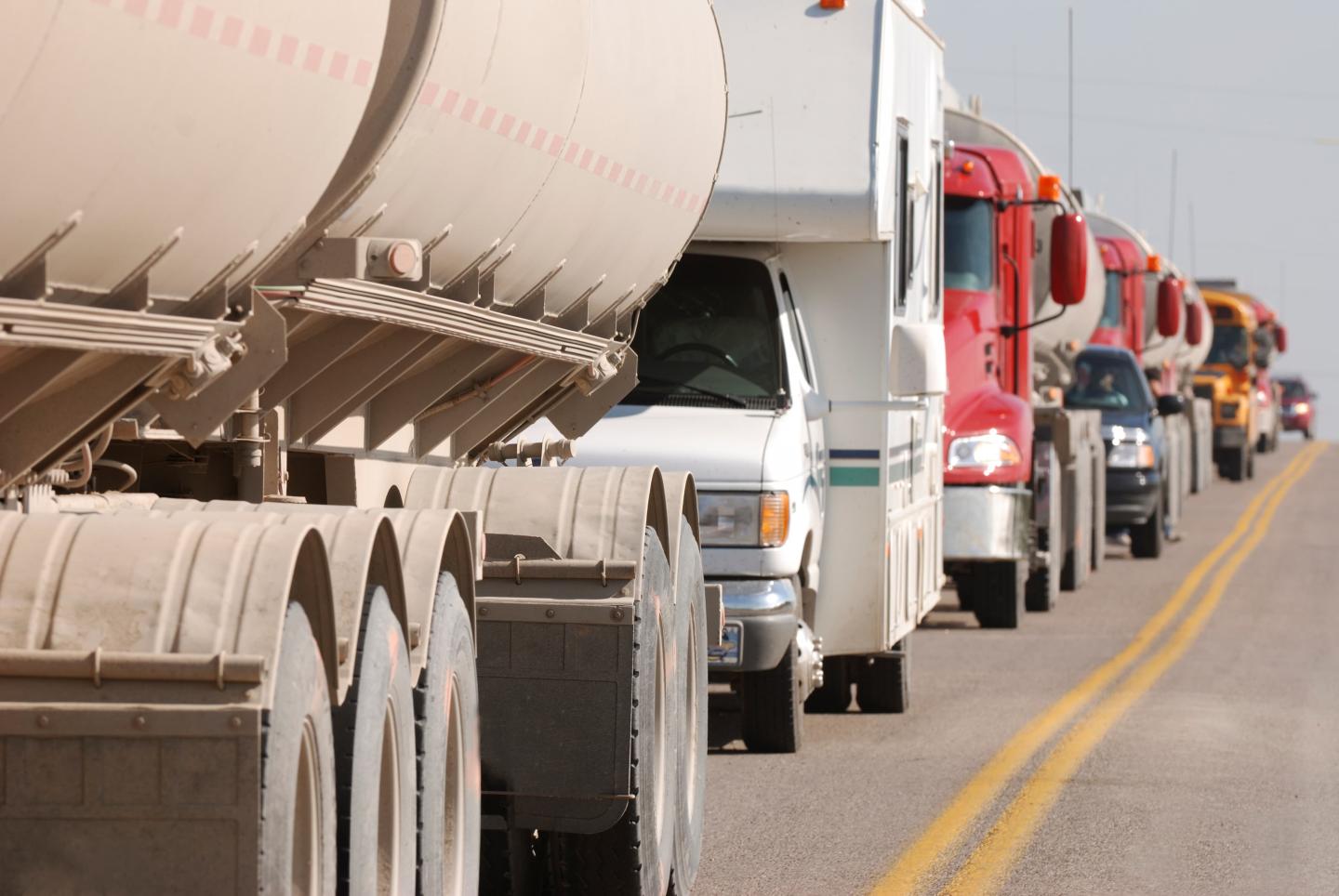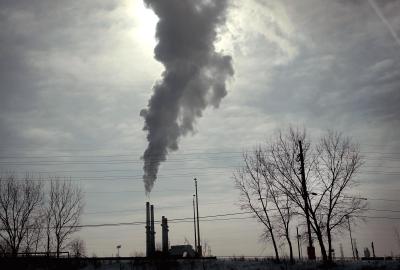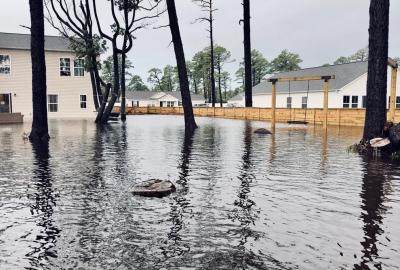Diesel trucks are super-polluters — clean trucks offer a shortcut to healthier air
Every morning, Justin Flores wakes up and does the same exact thing: He reaches for his inhaler, pushes down on the pressurized canister, and slowly inhales the medicine that calms his inflamed airways so he can breathe.

He’s 39, and he’s been doing this same routine since elementary school.
“Where I grew up, so many kids had asthma that if you forgot to bring your inhaler to school one day, you could just ask a friend to borrow theirs,” says Flores, who was raised in East Chicago, Indiana, a place where diesel trucks regularly crisscrossed his neighborhood on their way to and from the nearby port and steel factories.
Even though trucks and buses only make up about 10% of all vehicles on U.S. roads, these rolling super-polluters are responsible for more than 50% of the harmful vehicle pollution linked to asthma, heart disease and cancer.
But that outsized impact also represents an outsized opportunity: Tackling pollution from this relatively small segment of vehicles could make a big difference in air quality for those, like Flores, who live near heavily trafficked areas.
Despite their potential to clean up America’s air, zero-emission trucks and buses have become a target of the Trump administration’s funding cuts and regulatory rollbacks. The Senate even attacked California’s ability to set its own strong clean vehicle standards, including on trucks.
Environmental Protection Agency administrator Lee Zeldin has also promised to undo health-protective regulations on pollution from cars, trucks and buses. And the administration froze funding meant to replace dirty diesel school buses with clean ones — even though diesel pollution from school buses has been linked to lower test scores among U.S. children, half of whom ride a bus to school.
Even if these attacks don’t all succeed, the absence of federal support means that a successful shift toward clean trucks and buses will have to rely more heavily on state and local action.
Where local action continues
Charlotte, North Carolina, is one place where city leaders have stayed the course, despite changes in federal priorities.

The city recently broke ground on its first all-electric fire station. It’s also home to an electric fire truck — a powerful symbol of the reliability of electric vehicles.
Environmental Defense Fund’s Marilynn Marsh-Robinson says that Charlotte is a model of successful collaboration across city departments toward the same goal: less pollution.
Even Texas, a state synonymous with oil and gas, is making progress. There, clean trucks may get a boost from a business-friendly incentive in which multiple state-level grant programs are consolidated into one program that makes it easier for businesses to get money to buy electric trucks.
“Texas has some of the worst air quality in the country. But we also have some of the greatest opportunity for improvement,” says EDF’s Phillip Martin, who helped craft the new approach.
And Florida has purchased 467 new electric school buses thanks to federal funding from the Biden administration that was supplemented by money allocated by Governor Ron DeSantis.
“Everyone wants what’s best for their children,” says EDF’s Ali DySard, who works on vehicle electrification in Florida. “Even if federal funding dries up, there are still plenty of state and private programs that help make electric school buses the more affordable option.”
What’s next?

California is likely to remain at the forefront of state-level efforts to slash harmful diesel pollution from trucks, despite federal attempts to stop them.
Another state to watch is Illinois, where 12 counties rank in the top 9% of all U.S. counties at risk from diesel pollution. State leaders are now considering several rules that could tackle the problem by boosting clean vehicle sales and setting stronger pollution standards. As a crucial freight hub, getting Illinois to adopt stricter truck pollution standards could influence industry-wide improvements.
“If Illinois were to adopt a regulation modeled after California’s clean trucks rule, by 2050, nearly half of medium- and heavy-duty vehicles in Illinois would have zero tailpipe emissions,” explains Neda Deylami, an expert in vehicle electrification at Environmental Defense Fund.
- Online ordering has led to new warehouses — their trucks are choking neighborhoods with pollution
- 500 trucks pass through one Newark intersection in an hour. Kids are paying the price
In fact, when Northwestern University researchers modeled the effect of the proposed limits on truck pollution in Chicago, they found cleaner trucks could prevent 500 deaths and 600 new childhood asthma cases every year.
In California, asthma-related ER visits have already dropped by 3.2% in zip codes with more zero-emission vehicles.
For Justin Flores, the need to act is clear and urgent.
“Growing up in one of the most polluted places in the country, my family suffered,” he says. “My father passed away at a young age, my mother has lupus, and I have severe asthma... that’s why it’s important to me that our leaders do whatever it takes to cut down harmful air pollution for future generations.”


